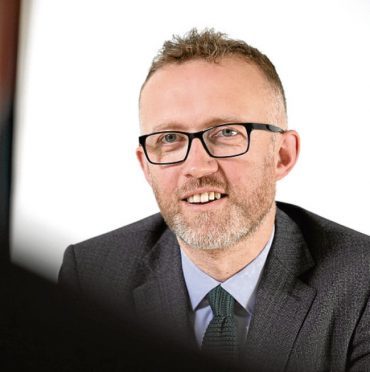Increases in income tax rates in some existing bands are “highly likely” to be announced in today’s Scottish budget, according to an Aberdeen-based chartered accountancy firm.
But John Todd, tax partner at Johnston Carmichael, believes measures outlined by Cabinet Secretary Derek Mackay this afternoon will see the basic rate left unchanged in Scotland.
The Scottish Government can vary the rates at which income tax is paid on wages, pensions and self-employed income. It can also vary the point at which tax rates apply. The UK Government controls the personal allowance and the rates applicable to dividends and savings income.
Last month, Chancellor Philip Hammond announced an increase in the basic rate income tax (20%) band from £45,000 to £46,350 for the rest of the UK. This represents a 3% increase in line with the Consumer Prices Index (CPI). The current basic rate band in Scotland ends at £43,000.
The draft Budget presented by Derek Mackay last year planned to increase the £43,000 by the CPI rate at that time. But, without a majority, the Green Party support was required to pass the Budget and, after negotiations, the basic rate band was frozen at £43,000. The Scottish Government recently issued a consultation paper which outlines several options for setting income tax rates and bands.
Mr Todd said: “Last year, the government considered increasing the 45% rate to 50%, but obtained advice that predicted this would result in a reduction in tax revenue due to behavioural effects. One option outlined in the paper is to leave the basic rate at 20%, but to increase the 40% and 45% rates to 41% and 46%.
“My gut feeling is this will be the option put forward this week along with an inflationary increase in the basic rate threshold.
“Philip Hammond finished his UK Budget speech by announcing a rise in the price at which a property becomes liable for Stamp Duty Land Tax to £300,000 for first-time home buyers. I don’t think the Scottish Government will introduce a similar Land and Buildings Transaction Tax (LBTT) relief in Scotland.”
The day after the UK Budget, Nicola Sturgeon gave a strong indication the Scottish Government would not follow the UK Government. She stated that 65% of first-time buyers pay no LBTT and 80% pay less than £600.
Mr Todd continued: “There has been suggestion in some quarters the residential rates of LBTT should be amended. Properties above £325,000 pay a 10% rate on the amount above £325,000; moving from a 5% band below that.
“Will the Cabinet Secretary look to change this? I don’t think so. My take is he will seek to leave things as they are.”










